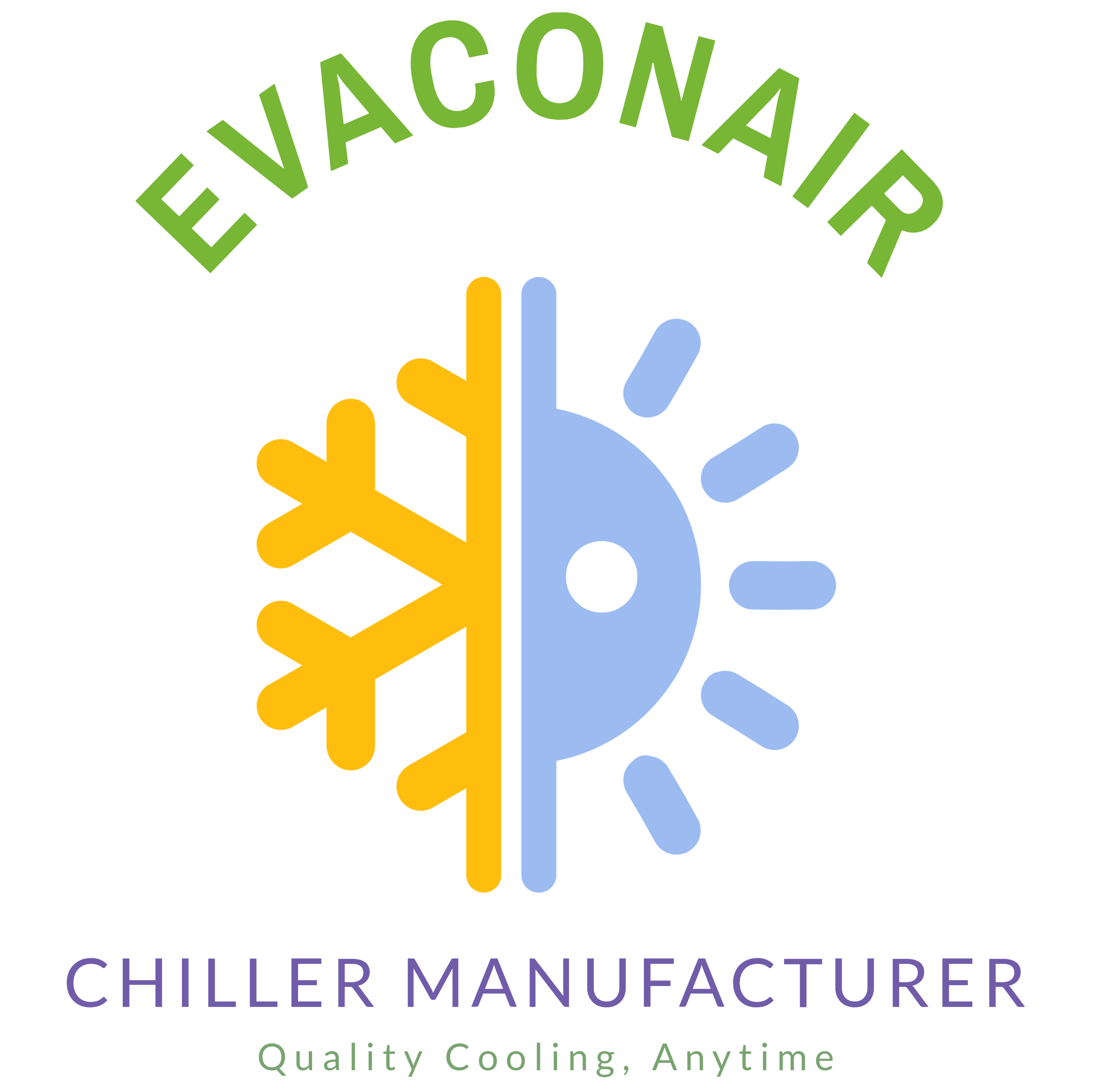Blog
Posted on
August 2, 2024
in
How is Water Cooled in a Chiller?
Water cooling in a chiller involves a process where heat is extracted from water through refrigeration cycles and expelled into the atmosphere or another cooling medium. Here’s how it works:
- Evaporator: The process begins in the evaporator, where the refrigerant absorbs heat from the water, lowering its temperature. This chilled water is then circulated through a cooling loop to provide air conditioning or process cooling.
- Compressor: The refrigerant, now a low-pressure vapor, moves to the compressor. The compressor increases the pressure and temperature of the refrigerant vapor.
- Condenser: The high-pressure vapor enters the condenser, where it releases the absorbed heat. In a water-cooled chiller, the condenser is cooled by a separate water loop, typically using a cooling tower. The water from the cooling tower absorbs the heat from the refrigerant and is then recirculated.
- Expansion Valve: Finally, the high-pressure liquid refrigerant passes through an expansion valve, lowering its pressure and temperature before returning to the evaporator to repeat the cycle.
For more detailed information on various types of water-cooled chillers, including water-cooled screw chillers, you can visit the EVACONAIR products page.
Key Components Highlighted:
This process ensures efficient cooling and is widely used in HVAC systems and industrial applications. For more information on different types of chillers and their applications, check out the EVACONAIR products page.
Related posts
October 1, 2024
What is the Capacity of a 2 Ton Chiller?
A 2-ton chiller refers to a chiller system with the ability to remove 24,000 BTU/hr of heat. The term [...]
Read moreOctober 1, 2024
What is the Unit of Chiller Capacity?
The unit of chiller capacity is typically measured in tons of refrigeration (TR) or kilowatts (kW). [...]
Read moreOctober 1, 2024
What is Chiller Range?
The chiller range refers to the temperature range and cooling capacity that a chiller can handle. The [...]
Read moreOctober 1, 2024
How to Calculate Chiller Size?
Calculating the correct chiller size is crucial to ensuring efficient cooling for your specific [...]
Read more